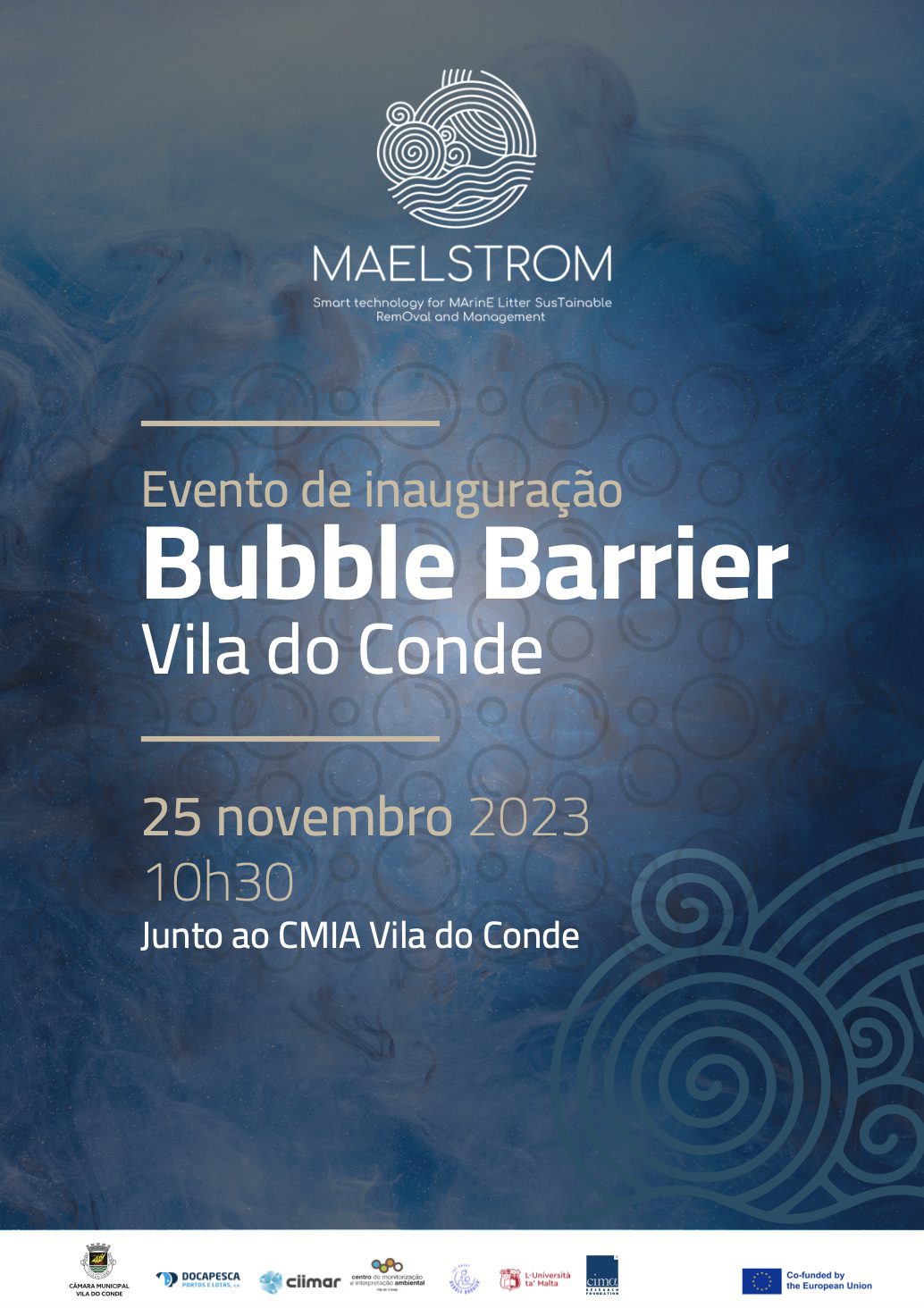MAELSTROM launches a Bubble Barrier to catch plastic in the Ave River (Portugal)
Project MAELSTROM brings together a consortium of 14 international partners with the mission to investigate and implement innovative technologies for the identification, collection, recycling, and recovery of marine litter. As part of the ‘removal’ of marine litter, the EU-funded project is launching a Bubble Barrier in the Ave River, with the Municipality of Vila do Conde on November 25th, at Vila do Conde
Consulte a versão portuguesa, aqui

An Innovative Solution to Plastic Pollution
The Bubble Barrier, developed by MAELSTROM partner The Great Bubble Barrier, is an innovative and efficient technology that catches plastics in rivers before they reach the ocean, using a curtain of air bubbles. The system consists of three main components: a bubble curtain, a compressor, and a catchment system and it works by pumping air through a perforated tube located on the bottom of the waterway. The air pumped creates an upward current which directs plastic to the surface. By placing the Bubble Barrier system diagonally across the river, the natural flow of the water pushes the plastic waste to the side and into the catchment system where it is collected for further processing.
Catching Plastic Pollution at the Source
The problem of riverine plastic pollution is universal: plastic debris is transported by rivers, crossing national and political borders, before reaching oceans.
The Municipality of Vila do Conde has taken a pro-active approach to plastic pollution by partnering with the MAELSTROM team to co-design and implement a Bubble Barrier in the Ave River. The project was undertaken with the scientific supervision of the Italian Research Council (CNR), project coordinator, and CIIMAR – Interdisciplinary Centre of Marine and Environmental Research which has led multiple assessments to understand the environmental impact of the Bubble Barrier on Ave’s riverine ecosystem. CIIMAR has also facilitated the involvement of local stakeholders such as the Docapesca Portos e Lotas, S.A., the Portuguese Environmental Agency, the Vila do Conde Port Captaincy and the Vila do Conde – Environmental Monitoring and Interpretation Centre (CMIA) which were extremely relevant for the design and implementation of the system. The Bubble Barrier will be officially launched on the morning of the 25th of November at the Environmental Monitoring and Interpretation Center (CMIA) headquarters.
An Impactful and Sustainable Collaboration
The Bubble Barrier has been proven to effectively capture 86% of inorganic debris in the water column, without obstructing the passage of fish, other marine life, or ship traffic.
The energy supply of the Bubble Barrier will be co-powered through solar panels installed by the University of Malta, another key partner of the MAELSTROM project which has designed a tailored solar panel system – both inland and floating – connected to the Bubble Barrier compressor and to the CMIA and Municipal Pool buildings in Vila do Conde. The solar panel system is expected to generate 57,300 kWh of renewable energy in the first year of operation, compensating for part of the electricity required by the Bubble Barrier from the electricity grid.
About Project MAELSTROM
MAELSTROM – Smart technology for MArinE Litter SusTainable RemOval and Management – is an EU-H2020 project bringing together 14 partners including research centers, recycling companies, NGOs, marine scientists, and robotic experts from 8 European countries.
The project is coordinated by the Italian National Research Council (CNR) and aims to implement innovative multi-level solutions for the sustainable removal and recycling of marine litter in coastal environments. MAELSTROM supports the global efforts being done to address the marine litter issue, as promoted by the United Nations Decade of Ocean Science for Sustainable Development, the EU Mission Restore Our Oceans and Waters and the United Nations Sustainable Development Goals (SDG 14: Life Bellow Water).